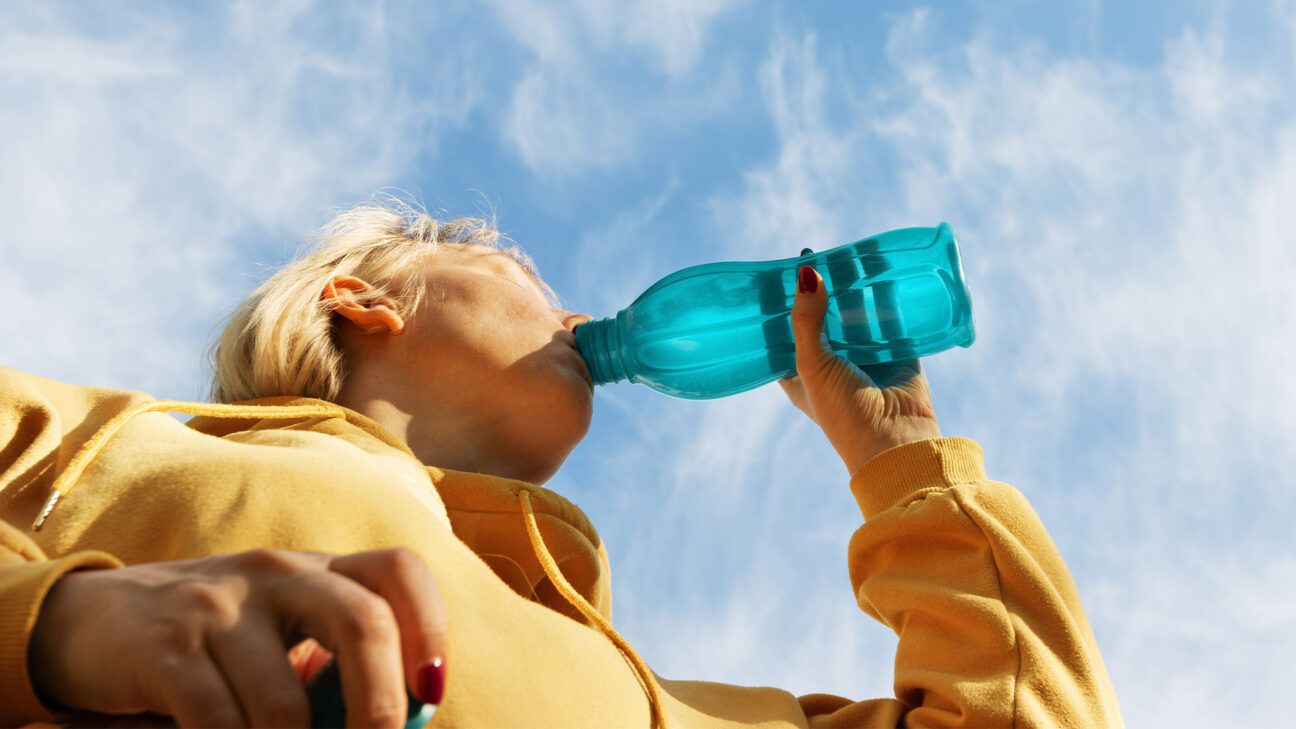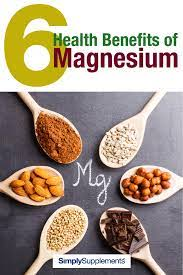
- A new study estimated that, on average, one liter of bottled water contains 240,000 detectable plastic fragments. These are known as nanoplastics.
- Nanoplastics are a cause for concern because they are difficult to detect and can pass through intestinal, tissue, and blood-brain barriers, which can result in serious health implications.
- To make sure your water is safe to drink, you can place water filters on the faucets and/or use them prior to drinking the water to get rid of some of the unwanted particles.
Health experts have become increasingly concerned about microplastics and their impact on humans and the environment.
Researchers are now looking into nanoplastics, which are even smaller than microplastics. A primary source of the problem is bottled water, which is filled with thousands of plastic fragments.
Nanoplastics are so small that they can directly enter the bloodstream and eventually make their way to other bodily organs and systems.
A new study published January 8 in the journal Proceedings of the National Academy of Sciences looks at how many nanoplastics can be found in a single plastic bottle of water.
“Our previous research has highlighted the widespread presence of microplastics in New York City’s waters and air, and their capacity to transport pollutants like PCBs, pharmaceuticals, and pathogens (Funded by the Hudson River Foundation),” Beizhan Yan, study author and Associate Research Professor at Columbia Climate School Lamont-Doherty Earth Observatory, told Healthline. “In comparison, nanoplastics are expected to have an even greater ecological and health impact due to their higher partitioning rate and associated nanotoxicity.”
Large amounts of nanoplastics in bottled water
For the new study, Yan and fellow researchers looked for seven types of plastic, which only made up approximately 10% of the nanoparticles in the water samples.
This suggests determining particle composition is quite complex.
The researchers estimated that an average liter of bottled water contained 240,000 identifiable plastic fragments.
Further research is necessary to determine if drinking bottled water containing nanoplastics could lead to adverse health effects.
“If people are concerned about nanoplastics in bottled water, it’s reasonable to consider alternatives like tap water,” said Yan. “However, it’s important to emphasize that staying hydrated is crucial for health. Therefore, we do not advise against drinking bottled water when necessary, as the risk of dehydration can outweigh the potential impacts of nanoplastics exposure.”
In the future, the researchers plan to expand their research platform to include a broader range of environmental samples, Yan explained. This will involve analyzing tap water, air samples, and biological tissues.
Their aim is to deepen our understanding of the presence and impact of nanoplastics in these environments. Yan and his research team also intend to investigate potential adverse health outcomes that may arise from exposure to nanoplastics.
Are nanoplastics dangerous?
“Plastics often contain a heterogenous mixture of various chemicals that provide a particular type of plastic its functional and structural capabilities,” Christopher Hine, PhD, of Cleveland Clinic Lerner Research Institute stated. “Many of these types of chemicals, once leached out of the plastic containers in forms of microplastics and nanoplastics can serve as endocrine disrupting chemicals (EDCs).”
Hine was not involved in the study.
These EDCs can mimic our natural hormones, such as the chemical bisphenol A (BPA) mimicking estrogen and activating estrogen receptors.
Conversely, other nanoplastic chemicals disrupt certain systems in the body including the pituitary and adrenal glands, and thyroid organ among others.
“A major concern for nanoplastics is twofold, in that they are: 1) Difficult to detect and filter out of consumer food and drink products; and 2) More readily able to cross intestinal, tissue, and blood-brain barriers thus potentially negatively impacting multiple organ systems,” Hine added.
Why there’s so much plastic in food
“In most consumer goods, be it food, drink or cosmetics, there is a long and complicated production process each encounters from the harvest of raw material to the finishing, packaging and shipping,” said Hine. “At each step, the product can be exposed and contaminated with various plastic-related chemicals. Thus, it is not surprising that with the author’s utilization of new techniques to detect the nanoplastics [found] so many new nanoparticles in consumer goods.”
Likewise, harmless chemicals placed into consumer goods and packages can sometimes degrade over time due to exposure to environmental agents such as UV radiation, normal spectrum light radiation, heat, ozone, and age and be chemically and physically modified into new chemical forms that can pose dangers to health, Hine added.
Therefore, it is important to store packages of consumer goods (food, drink, cosmetics, pharmaceuticals) as they are indicated as well as discard items that are beyond their expiration date.
How clean is your water?
Next, the researchers plan to examine tap water.
“Most municipalities and utilities companies that provide water to their communities follow stringent laws and regulations to ensure the product they deliver is safe for consumption,” Hine stated. “However, sometimes there are disruptions in water supply due to aging pipe and water main infrastructure failures that enable leaching of unwanted chemicals or microorganisms to the taps of consumers. Most of these disruptions are temporary and by following the directions of the municipal utility, such as running the tap or boiling the water, consumption of these unwanted items can be avoided.”
Furthermore, adding water filters on the faucets and/or using them before drinking the water can help eliminate some of the particles that may contaminate a water source.
“While there usually are less micro- and nanoplastics in tap water compared to commercially bottled water, if consumers end up storing their tap water in plastic containers that are exposed to heat, sunlight, and/or detergents this can increase the plastic contamination of the water,” said Hine. “Homes with well water may also have micro- and nanoplastic contamination due to environmental runoff of plastics pollution from landfills, trash, or soil/watershed pollution.”
The safest way to drink water
“Water is essential for life, and drinking water should be a part of one’s healthy daily routines. Drinking from the tap, from plastic bottled water, or from filtered devices are all ways we can use reach our water consumption goals,” Hine explained.
However, it is important to consider limiting exposure to unwanted micro- and nanoplastics when consuming water and other beverages.
“While tap, bottled, and filtered water are usually safe methods for consumption, tap water tends to have decreased amounts of these plastics while also providing fluoride as a preventative measure against tooth decay,” said Hine. “Thus, if the local municipality provides clean drinking water via the tap, this can be seen as one of the safest sources for drinking water. If the water is to be stored in plastic containers, then keeping them out of direct sunlight and in cool environments can also diminish plastics leeching into the water.”
Takeaway
According to a new study, an average liter of bottled water contains 240,000 detectable plastic fragments, also known as nanoplastics.
These tiny plastic particles are particularly problematic since they are hard to identify and can make their way into the blood and ultimately, bodily organs.
Health experts recommend using water filters to reduce the amount of plastics and contamination.

